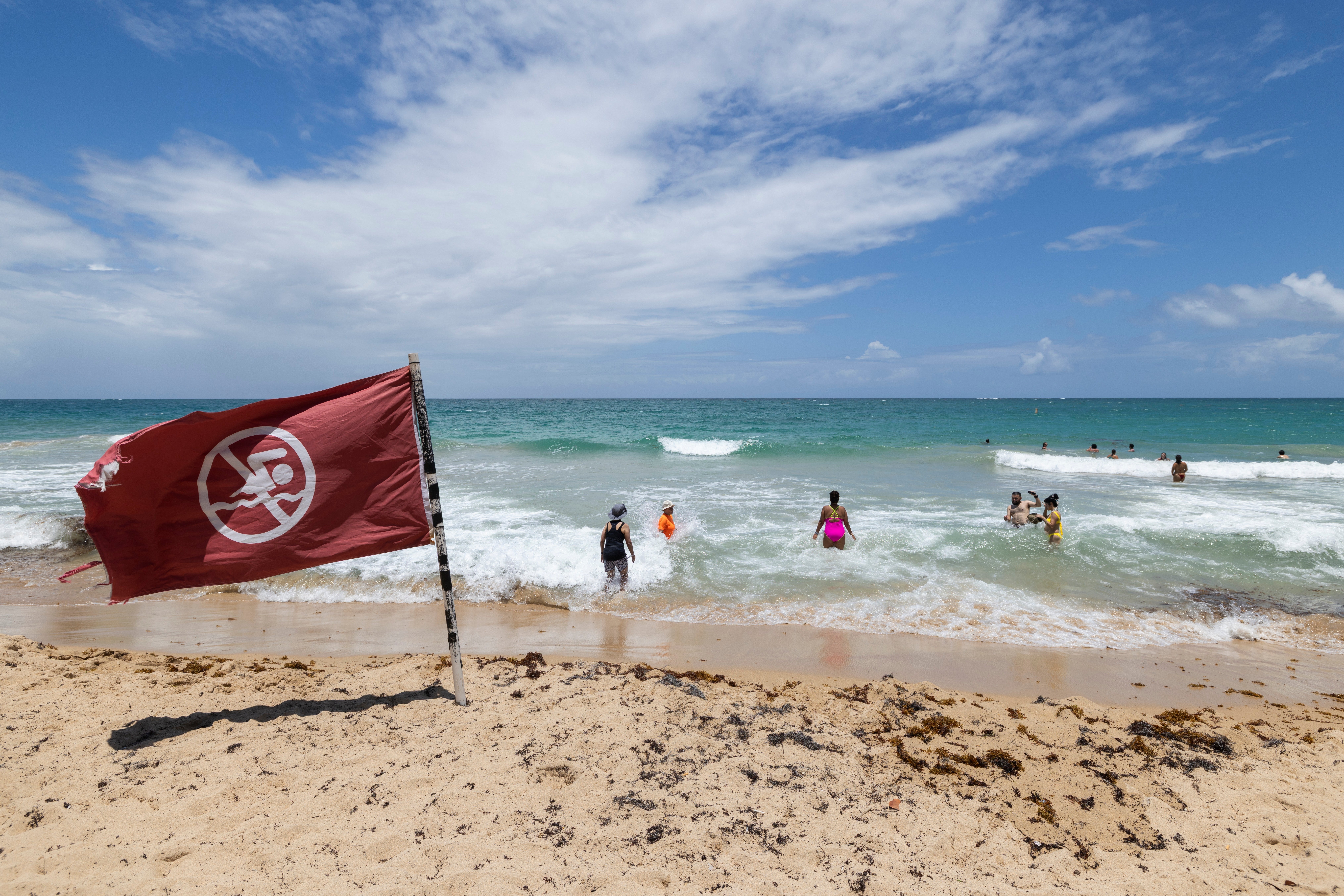Hurricane Erin has dramatically intensified into a Category 5 storm in the Caribbean, rapidly powering up from a tropical storm in just 24 hours, the National Hurricane Center confirmed on Saturday. The first Atlantic hurricane of 2025, its maximum sustained winds more than doubled to a formidable 160 mph (255 kph) by late Saturday morning.
While the compact hurricane’s core is not anticipated to make landfall, it poses a significant threat of torrential flooding rains across the northeast Caribbean as it continues to expand. Mike Brennen, director of the National Hurricane Center in Miami, described Erin as a “very powerful hurricane,” noting its winds gained 60 mph (96 kph) in intensity within approximately nine hours on Saturday.
“We expect to see Erin peak here in intensity relatively soon,” Brennan said in an online briefing.
The hurricane was located 105 miles (170 kilometers) north of Anguilla at about 11 a.m. Saturday, moving west at 17 mph (28 kph). The storm’s center was forecast to remain at sea, passing 145 miles (233 kilometers) north of Puerto Rico, according to the National Weather Service.
Erin was close enough to affect nearby islands. Tropical storm watches were issued for St. Martin, St. Barts and St. Maarten. The Hurricane Center warned that heavy rain in some areas could trigger flash flooding, landslides and mudslides.

Tropical-storm force wind gusts are possible in the Turks and Caicos Islands and southeast Bahamas.
Though compact in size, with hurricane-force winds extending 30 miles (45 km) from its center, the Hurricane Center said Erin was expected to double or even triple in size in the coming days.
Erin could create powerful rip currents off the U.S. East Coast from Florida to the mid-Atlantic next week, even with its eye forecast to remain far offshore, Brennan said.
Hurricane specialist and storm surge expert Michael Lowry said Erin gained strength at a pace that was “incredible for any time of year, let alone August 16th.”
The most powerful storms tend to form later in the year, with the hurricane season typically peaking in mid-September.
In October 2005, Hurricane Wilma rocketed from a tropical storm to a Category 5 storm in less than 24 hours, according to National Hurricane Center advisories from that time. Wilma weakened to a Category 3 hurricane before striking Florida.
Including Erin, there have been 43 hurricanes that have reached Category 5 status on record in the Atlantic, said Dan Pydynowski, senior meteorologist at AccuWeather, a private forecasting company.
“They’re certainly rare, although this would mark the fourth year in a row that we’ve had one in the Atlantic basin,” Pydynowski said about Category 5 hurricanes. Conditions needed for hurricanes to reach this strength include very warm ocean water, little to no wind shear, and being far from land, he said.
Scientists have linked rapid intensification of hurricanes in the Atlantic Ocean to climate change. Global warming is causing the atmosphere to hold more water vapor and is spiking ocean temperatures. The warmer waters give hurricanes fuel to unleash more rain and strengthen more quickly.
Storms that ramp up so quickly complicate forecasting for meteorologists and make it harder for government agencies to plan for emergencies. Hurricane Erick, a Pacific storm that made landfall June 19 in Oaxaca, Mexico, also strengthened rapidly, doubling in intensity in less than a day.
Erin is the fifth named storm of the Atlantic hurricane season, which runs from June 1 to Nov. 30. It’s the first to become a hurricane.
The 2025 hurricane season is expected to be unusually busy. The forecast calls for six to 10 hurricanes, with three to five reaching major status with winds of more than 110 mph (177 kph).
The U.S. government has deployed more than 200 employees from the Federal Emergency Management Agency and other agencies to Puerto Rico as a precaution as forecasters issued a flood watch for the entire U.S. territory from late Friday into Monday.
The U.S. Coast Guard said Friday that it closed six seaports in Puerto Rico and two in the U.S. Virgin Islands to all incoming vessels unless they had received prior authorization.
Meanwhile, officials in the Bahamas said they prepared some public shelters as a precaution as they urged people to track the hurricane.
“These storms are very volatile and can make sudden shifts in movement,” said Aarone Sargent, managing director for the Bahamas’ disaster risk management authority.







